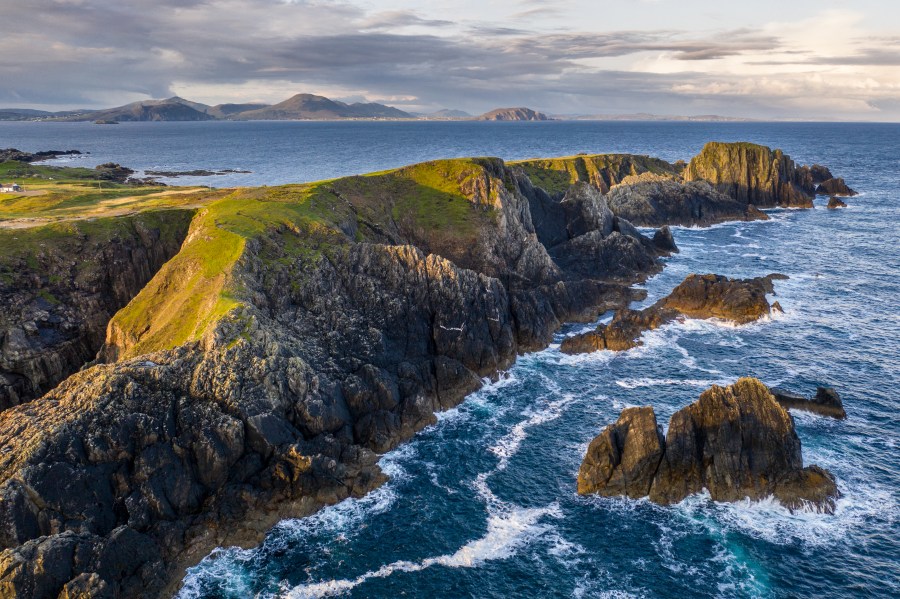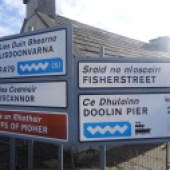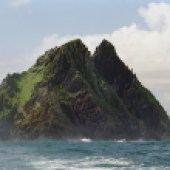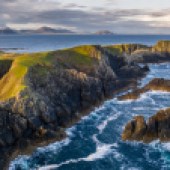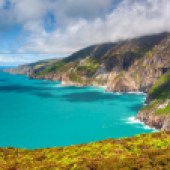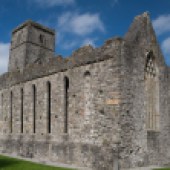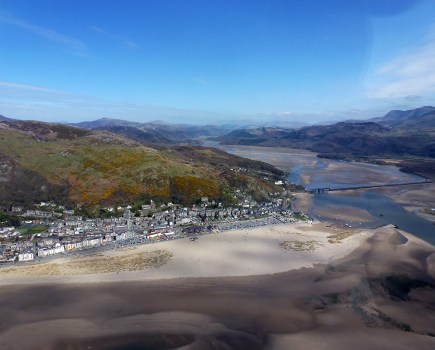Ireland’s celebrated touring route, the Wild Atlantic Way, is a 2,500km haven of heritage revealing the very best of Irish scenery and culture. ANDREW MILLHAM explores this windswept western coastline.
Follow the zig-zag; that will guide the way. It is, in fact, the navigational symbol found on road signs for the Wild Atlantic Way, the world’s longest coastal route, which passes through nine counties and offers over 1,000 attractions.
Clinging onto the edge of Europe, everything can be found here: soaring cliffs, deep loughs, intriguing islands, newly-drawn pints of stout with heads of yellow cream and buzzing towns alive with traditional folk sessions.
The route begins at the very northern tip of mainland Ireland at Malin Head, an imposing wall of grey cliff and jagged rock. It is as if all of the sharp shards, left over from creation, were picked up and scattered on the brink of the Atlantic Ocean. Travelling down the coast road, an oceanfront mountain named Slieve League rises before you, a dream for hikers, with babbling waterfalls and grazing sheep freely roaming the hills (and roads!).
Many more delights follow southwards, such as the atmospheric Mullaghmore Head, a renowned surfing spot and described as Ireland’s ultimate ‘big wave destination’. Sligo, meaning ‘shelly place’, is also known for its ruined medieval abbey and was the home of beloved poet W.B. Yeats. Once you are ready to move on, a gem of the sea awaits you: Achill Island.
ACHILL ISLAND
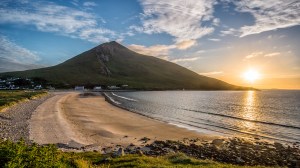
Achill Island, consisting of over 85 per cent peat bog, is attached to the mainland by a bridge and is blessed with blue flag beaches, mountains, lakes and sweeping Atlantic skies. This wilderness hosts its own island distillery (irishamericanwhiskeys.com/), County Mayo’s first and only aquarium (achillexperience.ie/), perfect for a rainy day, and a bike rental – a popular way to view the island.
The mysterious Kildavnet Castle towers over the waters of Achill on its south-eastern shore. It was first built by the Ó Máille clan in the 15th century before being inhabited by Grace O’Malley, the notorious ‘pirate queen’. Born around 1530, O’Malley forged a seafaring career from the age of 11 and was considered both a fierce leader at sea and a shrewd politician on land. She successfully defended the independence of her territories at a time when much of Ireland fell under English rule.
One story relates that, when Grace was young, she wanted to travel on an expedition with her father. She was denied her wish because her long hair might have caught in the ship’s ropes. To her father’s surprise, she defiantly cut off her hair which earned her the nickname ‘Gráinne Mhaol’, meaning ‘Bald Grace’. Plainly, a visit to Achill Island – a favourite haunt of this fearless leader and ruthless plunderer – is a must.
The Banshees of Inisherin, the 2022 three-time Golden Globe-winning film, starring Colin Farrell and Brendan Gleeson, was filmed on Achill Island. What’s more, visitors can now visit the traditional-style pub called ‘J.J. Devine’ which was built on the island specifically for filming but has since been moved to Kilkenny in East Galway. Even Taylor Swift, famed musician and a fan of the film, has said that she wants to visit!
THE CLIFFS OF MOHER
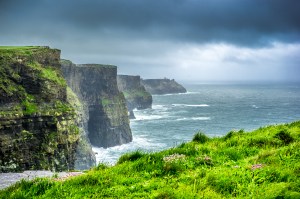
Aside from the out-of-this-world views, the Cliffs of Moher (cliffsofmoher.ie/) are most striking as they are entirely vertical. Each layer of soft shale and sandstone can be seen, exactly as they were laid down millions of years ago – a unique reminder of just how recent we are in geological time.
On a clear day the scenery is unmatched, with the Arran Islands (famous for their knitwear) etched into the crystal waters of Galway Bay, and you can hear the unforgiving roar of the waves gnawing at the soft rock below. With a due west exposure, sunset is the most magical time to visit, setting behind the famous O’Brian’s Tower.
The cliffs are part of a ‘geopark’ which also includes the neighbouring Burren, a vast limestone pavement where 200 square miles of flat grey rock stretches out beneath your feet in all directions. It is a surreal landscape, like being on the moon, and exists in stark contrast with the saturated green of the surrounding area.
The Cliffs of Moher are a hotspot for a wide range of flora and fauna, including seabird species such as puffins (where their population is actually increasing, bucking the current trend in Europe), guillemots, razorbills, fulmars and kittiwakes. Don’t forget to pack your binoculars!
Such is their drama, the Cliffs of Moher – Ireland’s most-visited natural attraction – have actually been featured in blockbuster movies including Harry Potter & the Half-Blood Prince, The Princess Bride, Leap Year and many more!
THE DINGLE PENINSULA
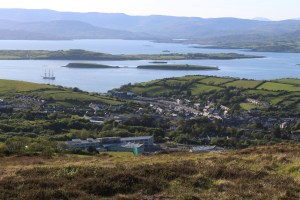
Before reaching the Dingle Peninsula, you must first cross the majestic Shannon Estuary. Fortunately, there is a 20-minute vehicle ferry (the only one on the main spine of the Wild Atlantic Way) which allows you to experience the rugged nature of land and sea as you breath in the salty air. If you’re lucky, you might even catch a glimpse of the dolphins which, in the summer, often swim close to the ferry, playing in its wake (shannonferries.com/).
Taking a sea safari out from the Dingle peninsula (dingleboattours.com/) is surely one of the best wildlife-watching experiences in the British Isles. Last year two orcas were spotted off of the coast, and other species of whale are regularly spotted by keen observers.
Many such boat trips from Dingle were once centred around Fungie, a lovable bottlenose dolphin who became separated from other wild dolphins and lived in very close contact with the people of Dingle from the mid-1980s. After a long and happy life, Fungie is thought to have died in 2020 but is still fondly remembered by locals. There is even a statue of him outside the Tourist Information Office!
The number one voted trip in Dingle is the Great Blasket Island Experience. Great Blasket Island is incredibly remote, having been uninhabited since the 1950s and consists of around four miles of unspoiled, largely mountainous, terrain dissected by dry stone walls. greatblasketisland.net/
It is also home to one of the largest grey seal colonies in the world. You can choose between a day tour, where you are left to explore the island for the day, or you can stay in one of the five restored self-catering cottages for complete immersion into the ultimate Irish getaway.
A trip out to Great Blasket Island will have you feeling like St Brendan the Navigator, who built a traditional wooden-framed ‘currach’ and departed from Brandon Creek on the Dingle Peninsula in the 6th century AD. His goal was to bring the Gospel to the western parts of the world. Upon his return seven years later, folks from miles around flocked to the peninsula to hear tales of his travels.
Slightly inland, the town of Killarney also has much to offer: the imposing St Mary’s Cathedral, charming high street and the red deer which are abundant in the national park and electrifying to watch during rutting season. From here on are the wondrous sights of Glenbeigh town (often referred to as “The Jewel in the Ring of Kerry”), walks around Bantry Bay, the conifer woodland and golf club of Glengarriff, and the birdlife on Dursey Island, which lies across a narrow sound which visitors cross by boarding the only cable car in Ireland.
Mizen Head, complete with an impressive footbridge, is often referred to as the most southerly point of mainland Ireland. This prize actually goes to Brow Head, 3.8km to the east. Still, Mizen Head is a place of poignance as, for centuries, it has been one of the first and last sights of Europe seen by seafarers.
KINSALE
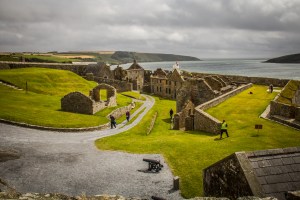
The colourful streets of Kinsale are famous the world over and there is no shortage of rich history in the town, situated at the end (or start depending on how you look at it) of the Wild Atlantic Way. The town is in fact home to the HQ of Barry’s Tea, the most popular tea in Ireland.
Two 17th century fortresses overlook the River Bandon: the enormous, star-shaped Charles Fort to the south east and the smaller James Fort on the river’s opposite bank. Also, a 16th century courthouse building houses the Kinsale Regional Museum where you can find fascinating reading about the tragic sinking of the RMS Lusitania in 1915 after colliding with a German U-boat.
The Old Head of Kinsale is a wonderous panoramic viewpoint and has had a castle standing on it since at least the 3rd century. Today, there is a world-class golf course on the headland, Old Head Golf Links, fitted out with luxury accommodation and an indulgent spa (oldhead.com/). If golf isn’t your sport, then Kinsale Hotel and Spa is less than 25 minutes from the main town and set in 90 acres of dramatic mature woodland overlooking Oysterhaven Bay (kinsalehotelandspa.ie/).
The Wild Atlantic Way terminates near to the city of Cork, an oasis for a weary traveller. The humming buzz and enchanting greenery of Fitzgerald Park is an idyllic place to picnic and reflect on your adventure.
A journey to the west coast of Ireland is anything but a once-in-a-lifetime experience; it’s hospitable charms and ethereal scenery draw you back time and again. The sea air and open ocean pulls at your soul, and the billowing waves echo off the cliffs with a profound sense of untamed freedom. With boat-loads to offer, new hidden treasures will always wait to be discovered. So, I wish you safe travels and remember…follow the zig-zag.
For an interactive map of the must-see attractions along the Wild Atlantic Way and to find out more about things to do and places to stay, visit thewildatlanticway.com/.

